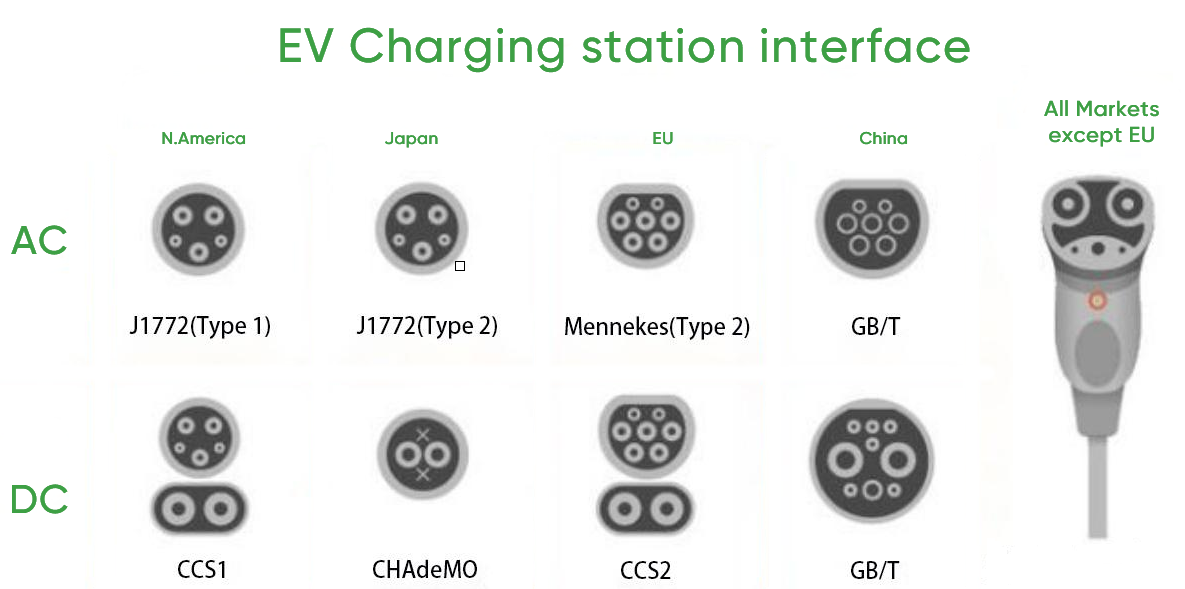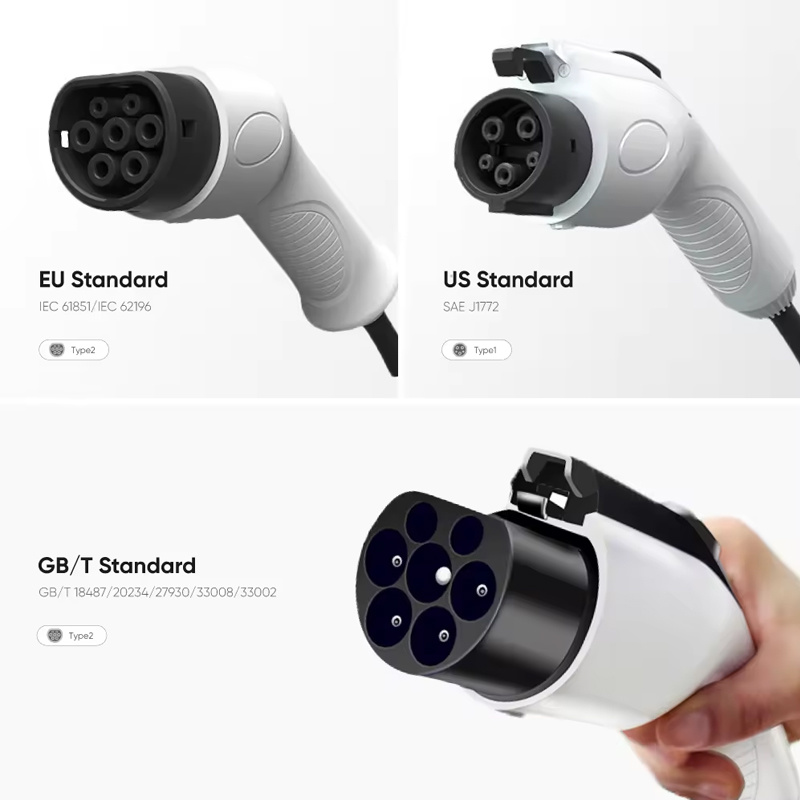Various Charging Plugs For Electric Vehicles
Release Time:
27 Feb,2025
The global electric vehicle (EV) charging pile market is experiencing robust growth, driven by the increasing adoption of electric vehicles and supportive government policies.
Expanding Market Size: The market size of the global EV charging pile industry has been on a consistent rise. According to Allied Market Research, the global electric vehicle charging station market was valued at 12.5billionin 2022andisprojectedtoreach49.8 billion by 2032, growing at a compound annual growth rate (CAGR) of 15.6% during the forecast period.
Fast-Charging Technology: There have been significant advancements in fast-charging technology, with many new charging piles supporting high-power DC fast charging. For instance, some charging piles can now recharge an electric vehicle to 80% in just 20-30 minutes.
Intelligent and Interconnected Systems: Modern charging piles are equipped with advanced software and communication technologies, enabling features like remote monitoring, real-time data analysis, and mobile app integration for users to locate and operate charging stations easily.

EV charging is divided into DC charging and AC charging.
DC charging:
Commonly known as "fast charging", it is fixedly installed outside the electric vehicle and connected to the AC power grid. It uses a three-phase four-wire 380v frequency stable frequency of 50HZ, and can also provide a DC power supply device for non-onboard electric vehicle power batteries.
AC charging:
It is also commonly known as "slow charging", but AC charging do not have a charging function. They must be connected to an on-board charger to charge the electric vehicle, which only plays a role in controlling the power supply.
The difference between DC charging and AC charging
Charging time: The most essential difference between slow charging and fast charging is the charging time. Generally speaking, it takes about 1.5 to 3 hours to fully charge the power battery with a DC charging pile; while it takes 8 to 10 hours to fully charge with an AC charging pile
On-board charger: If an AC charging pile charges the power battery, it needs to use the on-board charger on the car to charge it, while a DC charging pile can be charged directly, which is also the biggest difference from DC charging.
DC and AC charging plugs
Due to the differences in charging piles, charging plugs in different countries are also divided into DC charging plugs (DC) and AC charging plugs (AC)
.


J1772
A standard electric vehicle connector produced for the United States and Japan. The plug has 5 contacts and allows charging according to the Mode 2 and Mode 3 standards for a single-phase 230 V network (maximum current 32A). This plug has a maximum charging power of 7.4 kW and is considered slow and outdated.
CCS1
The CCS Combo 1 connector is a type 1 receiver that allows the use of slow and fast charging plugs. The connector works thanks to an inverter installed in the car that converts AC to DC. Vehicles with this type of connection can increase the charging speed to a maximum "fast" charge. The CSS Combo is designed to charge 200-500 V at a current of 200 A and delivers 100 kW of power.
CHAdeMO
The CHAdeMO plug is designed for use in powerful DC charging stations in Mode 4 and can charge the battery to 80% in 30 minutes (with a power of 50 kW). It has a maximum voltage of 500 V, a current of 125 A, and a power of up to 62.5 kW. It is suitable for Japanese vehicles equipped with this connector. This is common in Japan and Western Europe.
Mennekes Type 2
The Mennekes Type 2 plug is installed on almost all European electric vehicles, as well as on Chinese electric vehicles for sale. Vehicles with this type of connector can be charged from single-phase and three-phase power grids with a maximum voltage of 400 V and a current of 63 A. The maximum power of such charging stations is 43 kW, but usually fluctuates below 22 kW for three-phase networks and below 7.4 kW for single-phase networks. Electric vehicles are charged in mode 2 and mode 3.
CCS2
An improved and backward compatible version of the CCS2 type plug. Very common in Europe. Allows fast charging with a power of up to 100 kW.
GBT
A standard plug for electric vehicles produced in China. There are also two versions: AC and DC power stations. Charging power through this connector is up to 190 kW at (250A, 750V).
Key words:
Related News






